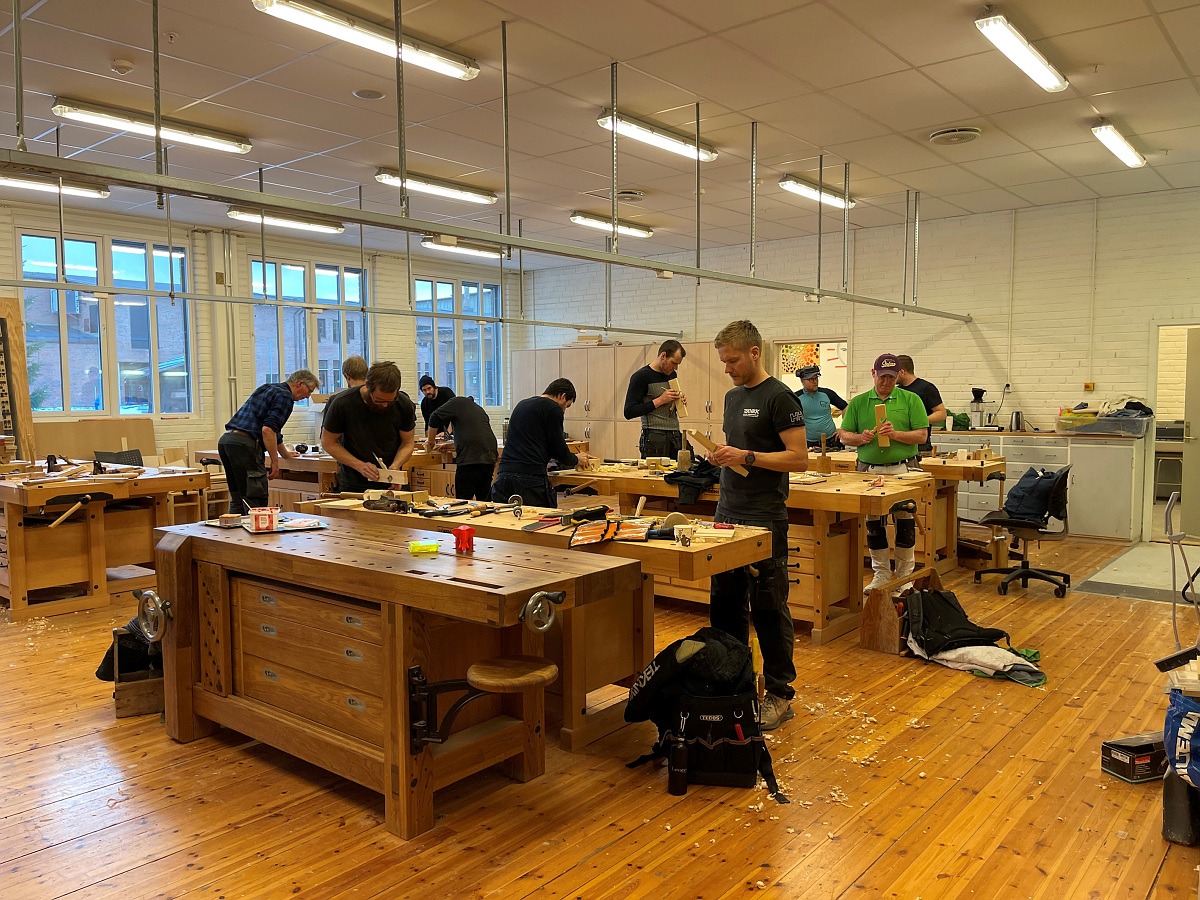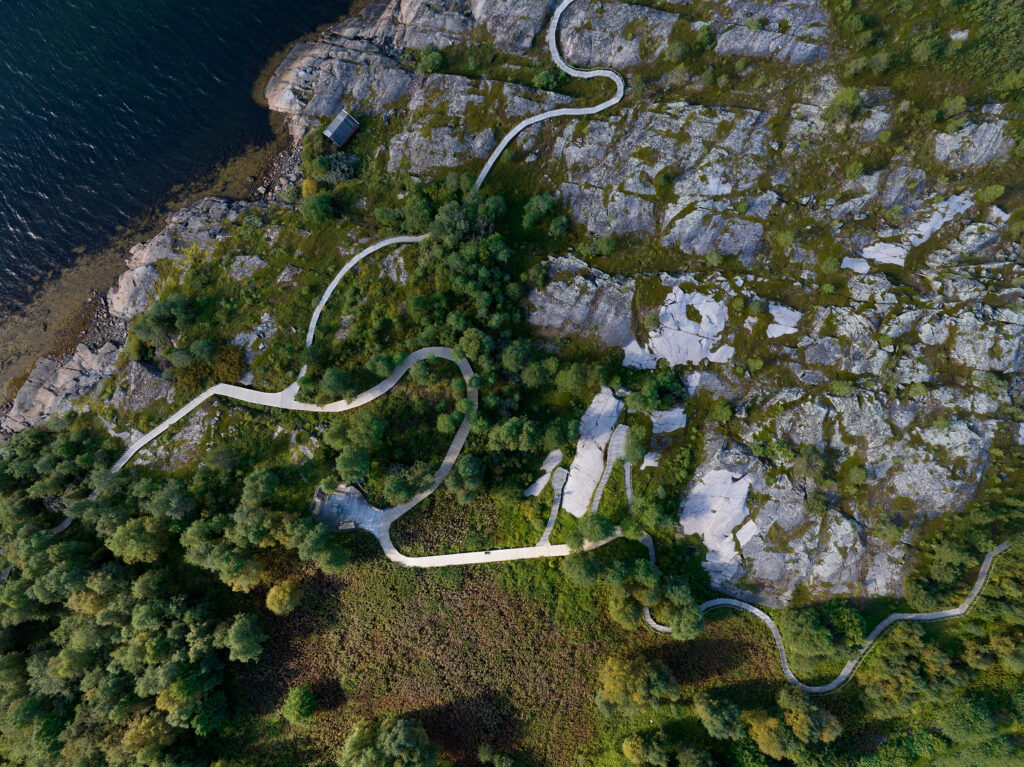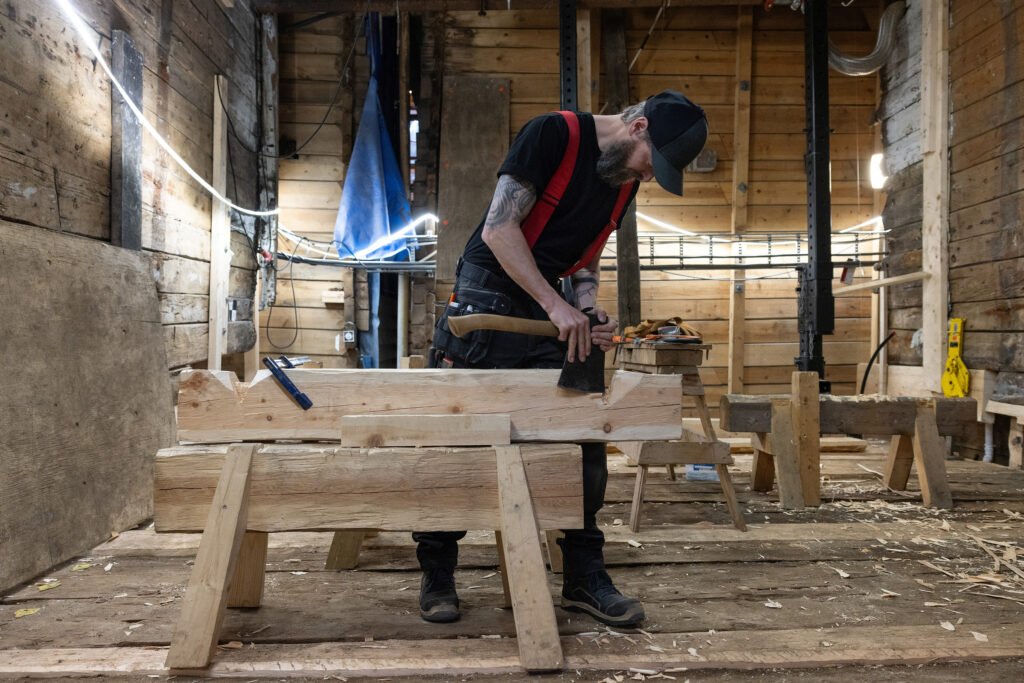Areas of specialisation
Skilled crafts
Without craftspeople, restoration projects would grind to a halt. Traditional craftsmanship plays a crucial role in the preservation of Norway’s cultural monuments, sites and environments.
Without craftspeople, restoration projects would grind to a halt. Traditional craftsmanship plays a crucial role in the preservation of Norway’s cultural monuments, sites and environments.
Access to the right craft expertise and training in traditional crafts directly affects the capacity to safeguard cultural monuments, sites and environments. The Directorate for Cultural Heritage has received multiple reports of a shortage of craftspeople for restoration work, and valuable knowledge is at risk of being lost. Traditional craftsmanship is also a valuable part of the intangible cultural heritage that is worthy of preserving and passing on to future generations.

Heritage restoration
In 2022, the annual market for heritage restoration of protected and historic buildings was estimated to be worth NOK 1 billion. Skilled craftspeople are already in short supply, and demand is expected to increase further now that the Church Preservation Fund and the grant schemes for culturally and historically significant church buildings have been initiated.
Climate-related damage to cultural environments
We are also seeing more instances of climate-related damage to cultural environments. This increases the demand for restoration skills and requires ongoing training to stay abreast of the changing picture and the consequences of climate change. We also need to adapt the principles and practices of restoration and conservation in line with new knowledge. In addition, more knowledge is needed about traditional materials and techniques, along with knowledge-sharing platforms that facilitate the transfer of this knowledge across the entire chain — from manufacturers to craftspeople.
The Directorate for Cultural Heritage’s Crafts Strategy
The Directorate for Cultural Heritage’s Crafts Strategy (2024) aims to strengthen both expertise and capacity in the traditional crafts necessary to safeguard cultural environments. Our overall objective is to ensure that owners and managers of protected and historic buildings, structures and vessels have stable, long-term access to relevant and necessary craftsmanship. The Crafts Strategy outlines our approach for the coming years, with the goal of improving access to opportunities within the cultural environment sector for craftspeople with the relevant skills.
Traditional crafts are a living part of our cultural heritage.
Traditional crafts are not only essential for preserving cultural monuments and sites – they also play a key role in keeping traditional knowledge and skills alive. By preserving and using old techniques and materials, we help ensure that the historical building techniques and everyday lives of our ancestors are not lost, giving us a deeper understanding of our own history and identity.
Many of the old buildings and objects that are now considered cultural monuments and sites were made using traditional craft techniques. These methods have proven to be highly durable. By using traditional craftsmanship in restoration and maintenance, we can help ensure that these cultural monuments and sites are around for many years to come.
Traditional building practices are often more environmentally friendly than modern methods as they utilise natural materials and techniques adapted to local conditions. This can help reduce greenhouse gas emissions and promote sustainable development.
The restoration and maintenance of cultural monuments and sites create jobs and can boost local economic growth. Traditional craftspeople are specialists who offer unique services, which can attract tourists and investment.
Learning traditional crafts provides valuable skills that can be applied in a variety of contexts. It is important to pass this knowledge on to new generations to ensure a continued supply of qualified craftspeople into the future.
Preserving cultural monuments and sites through traditional craftsmanship can strengthen local communities and foster pride in their cultural legacy. It also creates opportunities for voluntary work and civic engagement.
Traditional craftsmanship is not just a means of preserving old buildings and objects; it is a way of safeguarding our culture, history and identity. By supporting and promoting traditional crafts, we contribute to a sustainable future in which our rich cultural heritage can be passed on to future generations.
Contact person
Karen Elkjær, senior adviser
email: karen.elkjar@ra.no



